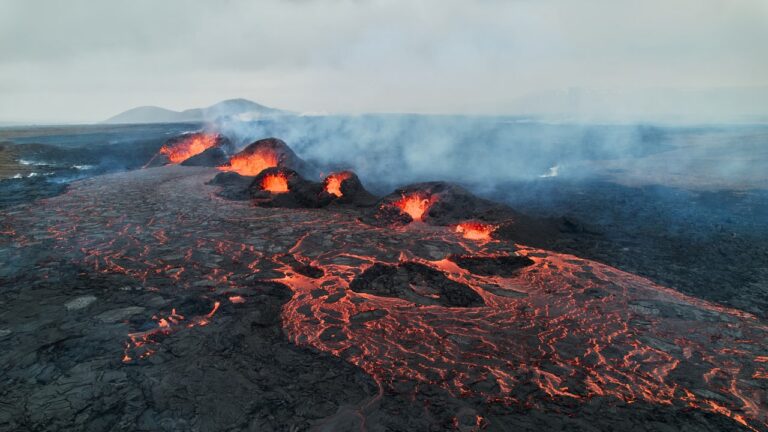The Blue Lagoon was closed for two months this winter, with hundreds of guests and staff evacuated due to eruptions in March and May (it reopened on June 14th). Eruptions also pose a risk to nearby infrastructure, including access roads, hot water pipelines and power plants.
The latest volcanic eruption, which began on May 29, lasted for 24 days and created the largest lava field to date. Danger areas around the active fissure have been closed off due to the risk of unpredictable lava flows, toxic gases, earthquakes and sinkholes.
If you plan on visiting Iceland in your lifetime, you will need to know a little about how to deal with the unpredictability of volcanoes.
However, apart from the exclusion zones, Iceland remains completely safe for tourists – just make sure to follow local guidelines – and air travel to Iceland was not affected, as it was during the 2010 Eyjafjallajokull eruption (which occurred under a glacier and produced an unusually large ash cloud that caused the cancellation of around 100,000 flights across Europe).
Still, misinformation and confusion have led some international travelers to cancel trips to Iceland out of fear, Kristinsson said. This year was expected to be a record year for tourism in Iceland, but bookings so far this winter are below expectations, Bloomberg reported.
But with some advice from locals, travelers can embrace the idea of Þetta reddast for themselves. If you plan on visiting Iceland in your lifetime, knowing how to deal with unpredictable volcanic activity is somewhat of a necessity. Scientists believe that the Reykjanes Peninsula could remain active for the next 100 years or more.
So what is the secret to Icelanders’ easy-going yet cautious respect for their sometimes self-destructive homeland? It’s not denial or ignorance of the reality of volcanoes, but rather the opposite. Icelanders can recite geological and volcanological facts like the alphabet. In Iceland, stories of past eruptions have been passed down for generations. The 1783 eruption of Laki caused famine and killed an estimated 20 to 25 percent of Iceland’s population. The 1973 eruption of Eldfell in the Westman Islands, where Kristinsson’s wife grew up, forced villagers to evacuate one night without warning, after which more than 400 homes were destroyed or buried in ash and lava.
It helps that Iceland is home to some of the world’s best volcanologists and forecasting techniques, and while it’s still possible to lose entire homes or towns to lava, deadly eruptions are now extremely rare: according to one 2008 study, only 13 people have died in eruptions in Iceland since 1500 A.D. (And that number has remained stable since then.)
“All of us who live here know that a big eruption is possible, but we’ve weathered these in the past, so there’s nothing we can’t weather again,” Agstsdottir said. “We’re prepared in case an eruption does occur, but we’re not too worried. We’re not going to do anything that will affect our daily lives.”
One reason this concept is hard for international travelers to grasp, she says, is that many countries aren’t equipped with social services to create a safety net for citizens displaced by natural disasters. But what Iceland may lack in physical security, it makes up for in social support networks: After most residents were permanently evacuated from Grindavík in November, the Icelandic government agreed to buy their homes for 95% of their original purchase price, and will subsidize rent for displaced residents’ new homes for the rest of the year.

